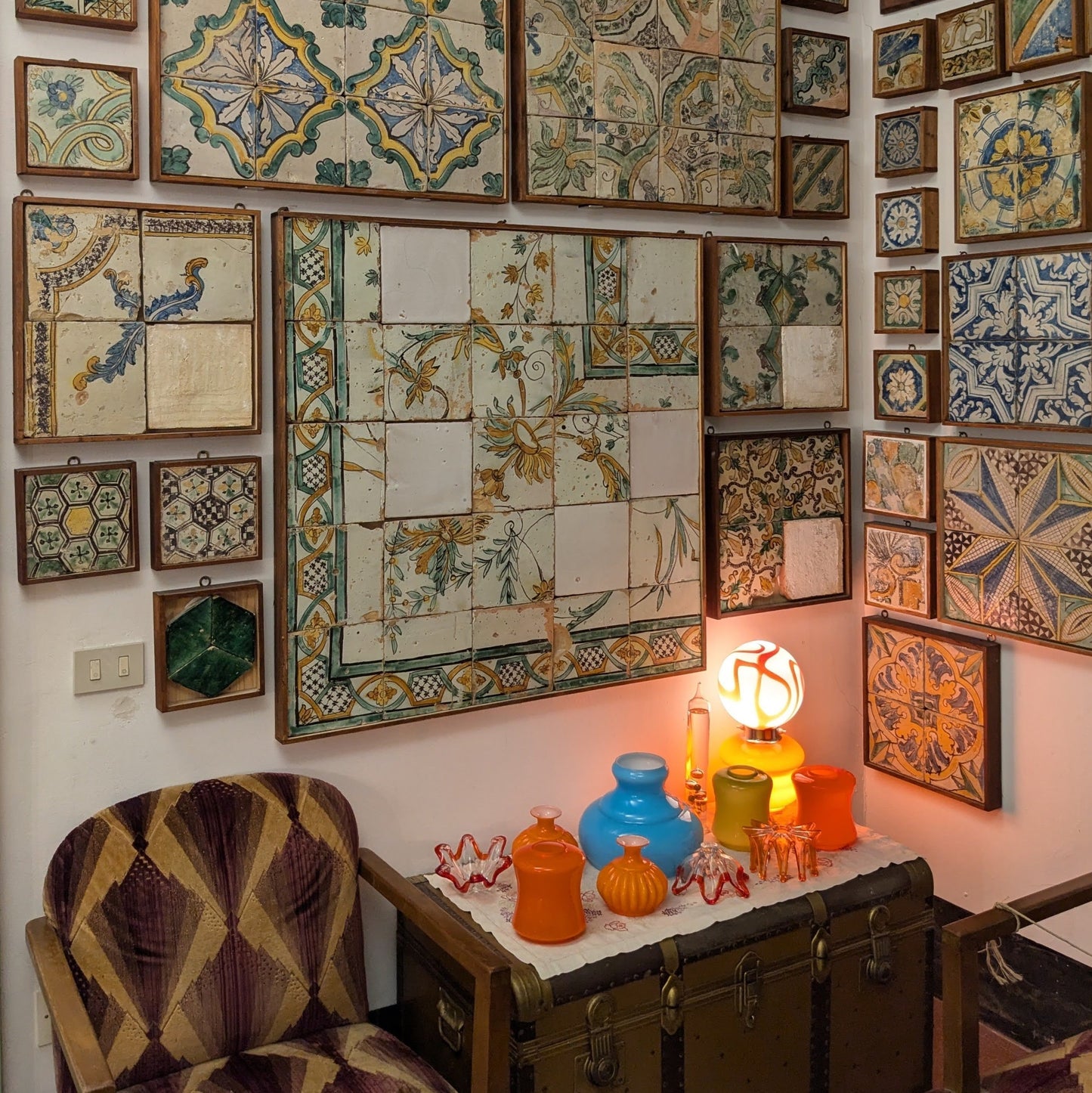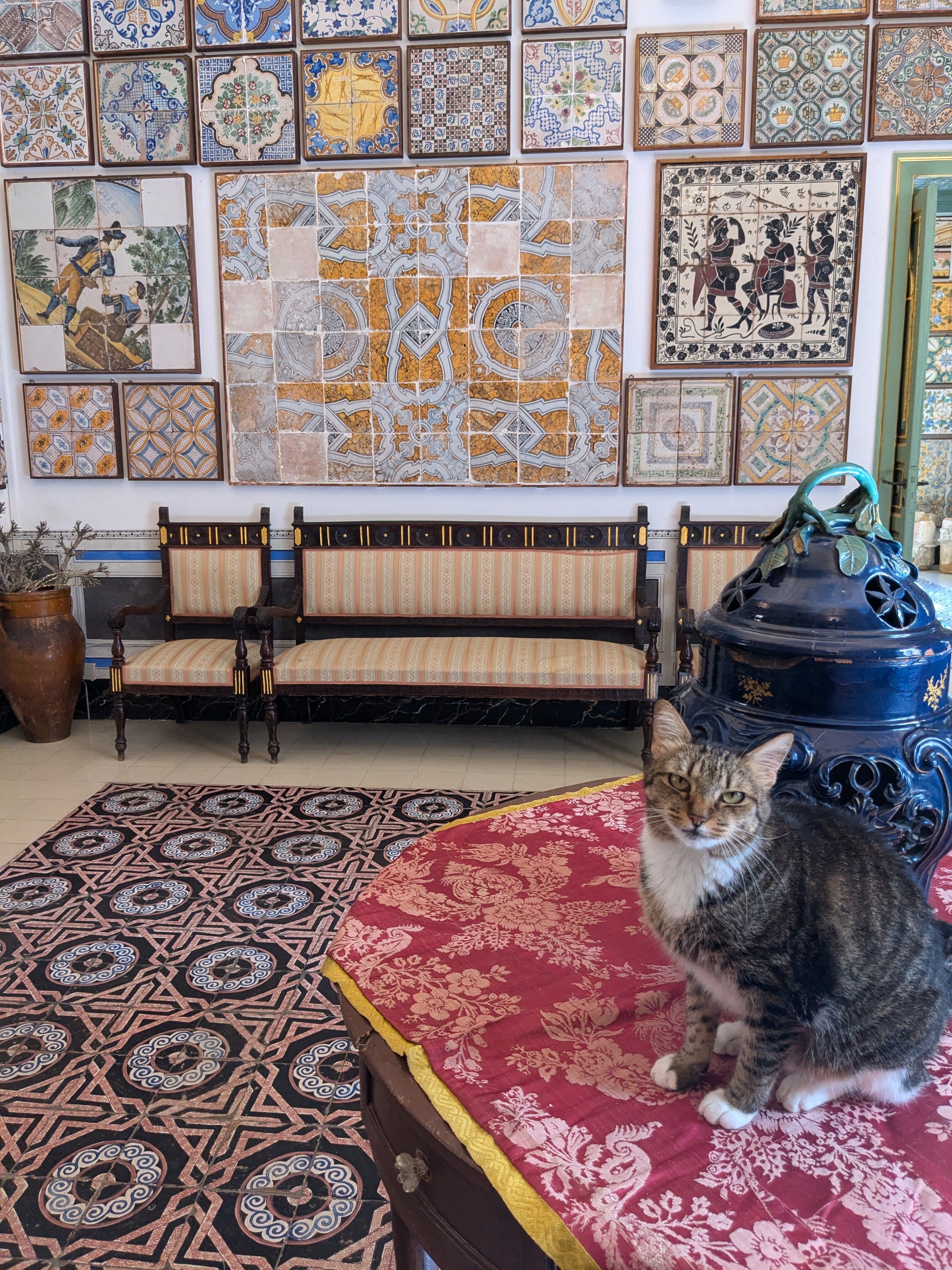
Sicily in July: the heat was intense and the crowds overwhelming, but I kept finding myself drawn to Palermo’s patterns, structures, and surfaces. I often photograph decorative patterns when I travel, and Palermo didn’t disappoint - tiles were everywhere. Two places stood out: the Cappella Palatina and the Stanze al Genio tile museum. Both showed how geometry shapes the city’s visual world, from sacred spaces to everyday life.
The Cappella Palatina, the royal palace chapel, is unlike anything I’ve seen. Built between 1132 and 1140, it blends Byzantine, Norman, and Islamic influences - a reflection of Palermo’s layered history.

Most striking was the muqarnas ceiling, an intricate honeycomb-like feature typical of Islamic design and rare in churches. Seeing it alongside Christian iconography was extraordinary.

The space is covered in mosaics made of intricate patterns, repeating forms, and shimmering gold - a hallmark of Byzantine design meant to inspire awe and reverence.





A few days later, I visited the Stanze al Genio tile museum, housed in the collector’s apartment. The space itself is a design dream and every turn offered a perfect photo. The lighting, colors, and careful tile arrangements all felt intentional. It was clear how much thought and care had gone into the display.


Where the chapel was grand and immersive, this space was quiet and personal, with pattern on a human scale. We walked through the kitchen and living areas, where everyday objects such as books, lamps, and even a collection of old jelly molds were thoughtfully arranged.



The tiles, gathered from homes across Sicily, Naples, and beyond, ranged from bold and graphic to soft and hand-painted. Together, they felt like fragments of lived-in spaces, full of personality and variation, yet part of a shared rhythm.





Photos: Swain McCaughrin
Both places revealed how pattern holds history, whether in gold or clay, in the sacred or the domestic, in the grand or the familiar. Geometry shaped not just surfaces but also the way each space remembered the lives and cultures that passed through it.
